So, you’ve decided to heed the call of the wild and venture into the grand sand seas of the desert. You’re ready to swap the buzzing of your smartphone for the whisper of the wind and trade the comfort of your king-sized bed for a night under the celestial dome. What could be more exhilarating? Let me guess, you’ve been binge-watching Bear Grylls and think you’re ready for the thrill of the open sands, right? Well, my brave friend, I must warn you reality might be slightly different from what you see on television. Don’t fret, though! I’ve been in your sandy shoes, and I’m here to help you navigate the unique and exciting challenge that is desert camping with 15 awesome tips for camping in the desert.
You might be asking, “What could be so different? It’s just camping, but with more sand, right?” Well, imagine this: You’ve finally set up your tent, slightly smug, considering you’ve done it without the help of your local boy scout. You’re admiring the sunset, when suddenly a whirlwind decides it likes the look of your tent and whisks it away like a genie disappearing into a lamp. Not to mention the unexpected nighttime chills that could make you wonder if you teleported to Antarctica instead of the desert!
But don’t be discouraged! Camping in the desert can be a beautiful and life-changing experience, full of awe-inspiring landscapes and star-studded night skies that city living can’t offer. It just comes with its own set of quirks and rules, just like your mother-in-law. This guide will prepare you for what lies ahead, so you can confidently trade those city lights for starlight and enjoy a serene desert night (without waking up in a sand dune!).
So, let’s kick off your gritty adventure with these 15 tips that are as hilarious as they are helpful. We’re about to embark on a journey that’s a whole lot more adventurous and slightly less predictable than your latest Netflix binge. Buckle up, future desert campers; we’re in for a sandy ride!
The Desert Calls: Understanding the Uniqueness of Desert Camping
So you’ve packed your bags, bid adieu to your comfy recliner, and you’re ready to conquer the desert, you absolute maverick! But let’s take a moment to understand this unique and somewhat prickly friend of ours, shall we? The desert, you see, isn’t your typical backyard camping situation. It’s like the eccentric uncle of the camping world: a bit unpredictable, can be incredibly hot or surprisingly cold, and is full of tales you won’t find anywhere else!
First things first, the desert is far from being just an endless sandbox. It’s got more personalities than your favorite superhero, each more exciting than the last! By day, it can be a scorching pan where even the lizards seek shade, with temperatures that would give your sauna a run for its money. Yet when the sun dips, the desert becomes as chilly as your ex’s heart. And that’s not all! The desert could decide to play its favorite game of ‘Let’s whip up a sandstorm’ just when you’ve mastered the art of not getting sand in your food.
You’ll be dealing with sand – lots of it. It’ll become your uninvited companion, creeping into your boots, your tent, and, yes, even your favorite cheese sandwich. Don’t be surprised if you’re finding grains of sand in places you didn’t even know you had, weeks after your camping trip!
And let’s not forget the desert’s own version of a soap opera: the fascinating wildlife. Just when you thought that the deserts were barren and lifeless, you’ll be surprised to meet the locals, from the magnificent birds soaring above to the industrious insects and other critters at ground level. And yes, there will be more than just camels and scorpions, even if they do hog all the limelight.
Sounds exciting, right? But don’t you worry! With the right preparation and the right spirit (and perhaps a little bit of that Bear Grylls grit), you’ll soon be navigating the sandy waves of the desert like a seasoned pro. And remember, at the end of the day, the desert, like that eccentric uncle, is full of wonder and beauty that’s worth every bit of the adventure. Onward, brave camper, to the land of sand and stars!
Packing – When Less is More and More is Sand
Let’s face it: packing for a trip can sometimes feel like you’re preparing for a round-the-world tour. You’ve probably been tempted to bring your entire house, including the kitchen sink, “just in case.” But when it comes to desert camping, it’s like a game of Tetris where every piece must earn its place.
Let’s start with the basics: a sturdy, sand-resistant tent that will stand up to gusty winds, but won’t transform into a mini desert inside with every breeze. You might think you’ve found a great spot, but the desert is sneakier than a mischievous cat. One minute your tent’s perfectly clean; the next, it’s auditioning for Aladdin’s magic carpet ride.
Next, a high-quality sleeping bag, rated for colder temperatures than you’d expect. Yes, even if you’re going to a place that’s hotter than a jalapeno in a heatwave during the day. Remember, the desert is a master of disguise. By night, it might make you wonder if you’ve taken a wrong turn and ended up in the Arctic.
A headlamp is a must. Why a headlamp, you ask? Well, have you ever tried to cook your dinner, ward off pesky critters, and navigate through your camping gear, all while holding a flashlight in your mouth? Believe me; it’s about as easy as juggling flaming swords. Plus, you know what they say, free hands, fewer face plants.
Don’t forget a hat, sunscreen, and sunglasses to protect you from the relentless desert sun. It might feel nice to soak up some rays, but looking like a boiled lobster on your first day isn’t the best look, even if you’re aiming for that “authentic” desert vibe.
Lastly, pack enough water to make a camel jealous. It’s easy to underestimate how much you’ll need, and trust me, a desert mirage is a lot less fun when you’re the one hallucinating.
Now, if you feel the need to bring that 10-volume encyclopedia for some light reading, or perhaps your inflatable flamingo for the non-existent desert pool, remember that less is more. Except for sand, of course. There’s always more sand.
Pro tip: Always pack a sense of humor. It doesn’t take up much space and is guaranteed to make your desert camping adventure a lot more enjoyable, especially when you’re munching on your first sandy sandwich!
Dressing for Success: The Desert Edition
Just like you wouldn’t wear a ball gown to a beach party or a swimsuit to a business meeting, you need to be a savvy dresser when it comes to desert camping. It’s not just about making a fashion statement – though you’ll certainly turn heads if you’re sporting a parka and snow boots in the middle of the Sahara!
Firstly, let’s debunk a common myth: less clothing is not the best way to stay cool in the desert. While the thought of donning a flowing robe à la Lawrence of Arabia might seem overdramatic, it’s actually not far off the mark. Loose, long-sleeved shirts and long pants made of breathable fabric are your best bet for keeping the scorching sun off your skin. You’d think after millennia of evolution, we’d have developed a little more sun resistance, right?
Remember, the desert can get cold. Seriously cold. You may think I’m pulling your leg, but ask anyone who’s spent a night in the desert. They’ll tell you how they woke up chattering their teeth and hugging themselves, wondering if they’d suddenly developed the ability to teleport to the North Pole in their sleep. So, always pack a warm jacket or a cozy fleece for those chilly nights. Yes, even if the daytime temperatures could fry an egg on your forehead.
A wide-brimmed hat is a must to protect your face and neck from the relentless sun. Plus, you’ll look just like Indiana Jones, minus the whip and imminent danger. Pair that with a good pair of sunglasses, and you’ll be the coolest (literally) camper around.
Lastly, choose sturdy, comfortable footwear that keeps the sand out but lets your feet breathe. I know; it’s like searching for a unicorn. But remember, a pair of flip-flops might seem like a good idea, until you find yourself doing the ‘hot sand hop’ or the ‘scorpion in my flip flop’ jig.
Take it from someone who once thought neon shorts and a tank top were the height of desert fashion, only to end up with a sunburn that could rival a cooked lobster. Dressing for the desert is more than just a fashion statement; it’s a matter of comfort, and, let’s face it, survival. So, wear your desert garb with pride and remember, Lawrence of Arabia has got nothing on you!
The Art of Picking a Campsite: Avoiding Nature’s Sand Traps
Choosing a campsite in the desert is much like finding the perfect parking spot at a crowded shopping mall during a holiday sale. Except, instead of battling rogue shopping carts and territorial drivers, you’re trying to avoid gusty winds, flash floods, and sneaky wildlife.
First rule of the desert club (no, it’s not “don’t talk about the desert club”), avoid low-lying areas. Yes, that little dip in the sand might look like the perfect cozy spot for your tent, but it could also be the neighborhood gathering spot for rainwater during a sudden storm. Waking up in a makeshift lake with your sleeping bag serving as a life raft is not quite the waterbed experience you want.
Next, pay attention to the wind direction. While you can’t stop the wind from inviting itself over, you can at least avoid becoming the main course at its dinner party. Try to set up your tent in a direction that’s perpendicular to the wind. Otherwise, you might end up with a tent that’s more inflated than a hot air balloon at a fiesta.
Make sure you’re not setting up camp on a critter’s front porch. Check for signs of animal activity, like tracks or burrows. You might think you’ve found the perfect spot, only to discover that you’ve pitched your tent on Mr. Scorpion’s driveway. Trust me; desert critters are not the kind of roommates you want.
Watch out for plants too! They might seem sparse and unassuming, but desert flora can be as prickly as a grumpy hedgehog. Cacti are notorious for this – they might look cute and cuddly from afar, but get too close, and you’ll be plucking cactus spines out of unfortunate places for days.
Lastly, remember to set up your camp at least 200 feet away from any water sources. Not only will this help protect the fragile desert ecosystem, it also means you’re less likely to be trampled by thirsty wildlife on their evening water run.
Picking a desert campsite might not be a walk in the park, but with these tips in mind, you’ll avoid the worst of nature’s sand traps. Remember, it’s all part of the adventure, like a treasure hunt, but instead of a pot of gold, you get a perfect place to rest your weary bones – and that’s priceless.
Embrace the Sunscreen
In the desert, the sun reigns supreme, casting its scorching rays upon all who dare to venture into its domain. To protect yourself from becoming a walking tomato, it’s time to embrace the almighty sunscreen. Don’t worry; we’ve got you covered (literally).
The Sunscreen Commandments
Thou shall not underestimate the power of sunscreen. Choose a broad-spectrum sunscreen with a high SPF (Sun Protection Factor) of at least 30 to shield your skin from harmful UVA and UVB rays. Slather it generously on all exposed areas, including your face, neck, arms, and legs. And don’t forget those easy-to-miss spots like the tips of your ears and the back of your neck—no one wants a sunburned ear or a rooster-like neck tan.
Timing is Everything
Timing your sunscreen application is as crucial as remembering to pack your sense of humor. Apply sunscreen at least 30 minutes before heading out into the sun to allow it to absorb into your skin properly. Reapply every two hours or more frequently if you’ve been sweating like a desert waterfall or swimming in a desert mirage (which we don’t recommend).
Don’t Forget the Eyes
The desert sun can be blinding, so don’t forget to protect those peepers. Wear sunglasses with UV protection to shield your eyes from harmful rays. Not only will you look effortlessly cool, but you’ll also avoid squinting so much that you resemble a confused desert mole.
Lip Service
Your lips deserve some love too, especially in the desert’s harsh conditions. Use a lip balm with SPF to prevent them from turning dry, chapped, and as flaky as a desert sandstorm. Plus, it’ll make your pout irresistibly kissable for any desert wanderers you may encounter (human or otherwise).
Seek Shade Like a Pro
Even with sunscreen on, seeking shade is a wise move in the desert. Set up your sunshade, find a natural shelter, or create your own oasis under the generous shade of a desert tree. It’s like finding a cool oasis in the desert, minus the palm trees and poolside waiters.
Remember, the desert sun is no joke. By embracing the power of sunscreen, protecting your eyes and lips, and seeking shade when possible, you’ll shield yourself from the sun’s wrath and keep your skin looking as radiant as a desert sunrise. So, lather up, don your sunglasses, and embrace the power of SPF like a desert-loving sun warrior. Your skin will thank you, and you’ll be ready to take on the desert with a healthy glow.
Battling the Bugs
In the desert, where the sun reigns supreme, the critters come out to play. From the buzzing flies to the creepy crawlies, insects are an inevitable part of the desert camping experience. But fear not, brave camper! With a few strategies up your sleeve, you can keep the bugs at bay and maintain your sanity.
Bug Repellent Arsenal
Arm yourself with bug repellents like DEET-based sprays or natural alternatives containing ingredients like citronella or eucalyptus oil. Apply the repellent to exposed skin and clothing, creating an invisible force field against those pesky critters. Just remember, it’s not a fashion statement, so don’t overdo it and end up smelling like a walking insect-repellent factory.
Dress Defensively
Covering up is your secret weapon in the battle against desert bugs. Wear long-sleeved shirts, pants, and socks to minimize exposed skin and reduce the chances of bug bites. Opt for lightweight, breathable fabrics to stay cool while keeping the critters at a safe distance. Plus, you’ll feel like a desert fashion icon, rocking that trendy “bugs, be gone” look.
Bug-Free Campsite Zone
Create a bug-free sanctuary at your campsite by setting up a bug net or screen house. These handy contraptions create a barrier between you and the buzzing invaders, allowing you to enjoy your meals and relax without becoming a buffet for hungry insects. It’s like having your very own VIP section in the bug nightclub.
Avoid the Twilight Zone
Bugs are often more active during dawn and dusk, commonly known as the “twilight zone.” During these hours, they come out in full force, ready to party (or bite). Limit your outdoor activities during these times, and retreat to the safety of your bug-free zone. Think of it as your cue to grab a refreshing beverage and swap bug stories with your fellow campers around the campfire.
Bug-Eyed Vigilance
Keep an eye out for any bug hotspots around your campsite, such as stagnant water or ant hills. Avoid pitching your tent or setting up your picnic near these bug-friendly areas. Remember, you’re the intruder in their territory, so steer clear of their bug neighborhood to minimize unwanted encounters.
Battling the bugs in the desert is like a game of wits. With bug repellents, protective clothing, and a bug-free zone at your campsite, you’ll emerge victorious in this insect-infested battlefield. So, gear up, embrace your bug-fighting alter ego, and show those critters who’s boss in the desert wilderness. And hey, you might even have a good bug-related story to share around the campfire.
Mindful Campfire Practices
Ah, the crackling campfire—the heart and soul of any camping trip. But in the desert, where dry conditions prevail, campfire safety takes on a whole new level of importance. Let’s dive into some mindful campfire practices to keep you warm, entertained, and on good terms with the desert ecosystem.
Check the Rules
Before you ignite the flames of camping bliss, familiarize yourself with the campfire regulations and restrictions in the area you’re visiting. Some desert regions have strict fire restrictions or even bans during certain times of the year to prevent wildfires. Stay informed and comply with the rules, because no one wants to be known as the person who turned the desert into a smoky inferno.
Fire Pit Selection
If campfires are allowed, use existing fire pits whenever possible. These designated areas are designed to contain the fire and minimize the risk of spreading. Avoid creating new fire pits or altering existing ones, as it can disrupt the delicate desert ecosystem and cause long-term damage. Plus, it’s like taking someone’s reserved seat at the desert campfire party—it’s just not cool.
Responsible Fuel Collection
In the desert, firewood is scarce and essential for the ecosystem. Avoid collecting firewood from the desert environment, as it serves as a crucial habitat for plants, animals, and even creepy-crawlies. Instead, bring your own firewood or purchase it locally, ensuring it’s from sustainable sources. And don’t forget to keep an eye out for scorpions or other critters that may have hitched a ride on the firewood—they’re not the kind of surprise guests you want at your desert campfire soirée.
Mindful Fire Management
Once the fire is lit, practice responsible fire management. Keep the fire at a manageable size, adding wood gradually to maintain a steady flame. Never leave the fire unattended, and always have a bucket of water or a fire extinguisher nearby. Remember, you’re in the desert, where things can go from calm to chaotic faster than you can say “s’mores.” So, be vigilant and keep that fire under control.
Alternative Cooking Methods
Consider alternative cooking methods to reduce your reliance on the campfire. Propane or butane stoves are efficient and reliable options for preparing meals without the need for an open flame. Plus, they won’t leave you smelling like a smoky BBQ pit, unless that’s the goal.
By practicing mindful campfire practices, you can enjoy the cozy ambiance of a desert campfire while minimizing the risk of wildfires and preserving the delicate desert ecosystem. So, gather around the fire responsibly, share stories, and create memories that will warm your heart without scorching the sand beneath your feet.
Food Storage and Waste Disposal
In the desert, where wildlife roams and the ecosystem thrives, it’s essential to practice responsible food storage and waste disposal. Not only does it protect the environment, but it also ensures the safety of both you and the desert’s furry inhabitants. Let’s dive into some tips to keep your food secure and your campsite clean.
Store Food Properly
The desert is home to curious critters who won’t hesitate to raid your campsite in search of a tasty treat. To avoid unwanted visitors and potential encounters, store your food securely. Consider using bear canisters, which are designed to keep food odor contained and prevent animals from accessing your provisions. Alternatively, you can hang food bags from a sturdy tree branch, away from the reach of nimble desert dwellers.
Leave No Trace
Embrace the “Leave No Trace” principle, which is essential for preserving the natural beauty of the desert. Pack out all your trash, including food wrappers, empty containers, and any other waste. Leave your campsite as pristine as you found it, or even better. Trust us, there’s no better feeling than leaving a place better than you found it, like a desert superhero.
Mindful Dishwashing
When it comes to washing dishes, avoid using soap or detergent in natural water sources like rivers or streams. These soapy substances can harm aquatic life and disrupt the delicate desert ecosystem. Instead, collect water in a container and wash your dishes away from water sources. Strain out any food particles and scatter the wastewater on durable ground, away from vegetation.
Dispose of Human Waste Properly
When nature calls in the desert, it’s crucial to handle your business responsibly. Use designated toilet facilities if available. If not, follow proper waste disposal techniques. Bury human waste in a hole at least six to eight inches deep and 200 feet away from water sources, campsites, and trails. It’s a delicate task but an important one for both hygiene and environmental reasons.
Be Respectful of Wildlife
Resist the temptation to feed wildlife in the desert. Human food can disrupt their natural diet and create dependency, leading to unhealthy behaviors. Observe wildlife from a safe distance, appreciate their beauty, and keep in mind that the desert is their home. Leave them to their desert adventures and focus on your own, like perfecting your sandcastle-building skills.
By practicing responsible food storage, waste disposal, and being mindful of wildlife, you’ll leave a minimal footprint on the desert ecosystem while ensuring a safe and clean camping environment. So, take care of the desert, and it will take care of you, offering unforgettable experiences and a connection with nature that will last a lifetime.
Navigation and Orientation
Navigating the vast and seemingly endless expanse of the desert can be a thrilling adventure. But before you embark on your desert exploration, it’s crucial to have the skills and tools to navigate with confidence. Let’s delve into some tips to help you find your way and avoid getting lost in the dunes.
Maps, Maps, Maps
Bring a detailed map of the desert area you’ll be exploring. Study it beforehand and familiarize yourself with key landmarks, trails, and potential water sources. It’s like having your own treasure map, except the treasure is the stunning beauty of the desert landscape.
Compass Companion
A reliable compass is your trusty sidekick in the desert wilderness. Learn how to use it before your trip and practice basic navigation techniques. It will be your guiding star when the sun is blazing overhead and the sand dunes all look eerily similar.
GPS Guidance
Consider bringing a GPS device or smartphone with a reliable navigation app that works offline. These technological marvels can pinpoint your location, track your routes, and provide valuable information such as elevation and distance traveled. Just make sure to have backup batteries or a solar charger to keep your device powered up in the desert’s energy-sapping environment.
Marked Trails
Stick to marked trails and established paths whenever possible. These routes are designed to guide you safely through the desert and minimize the impact on the fragile ecosystem. Straying off the beaten path can not only lead to getting lost but also cause irreversible damage to the delicate desert flora and fauna. Plus, staying on marked trails means you’ll avoid awkward encounters with prickly cacti.
Nighttime Navigation
Nighttime in the desert offers a mesmerizing display of stars, but it can also pose navigational challenges. If you find yourself navigating after dark, bring a headlamp or flashlight with extra batteries. Familiarize yourself with the constellations and learn to identify key stars as reference points. Just be careful not to trip over those elusive desert critters while stargazing.
Remember, the desert is a vast and ever-changing landscape, so it’s crucial to be prepared for navigation challenges. With maps, compasses, GPS devices, and an understanding of marked trails, you’ll be equipped to navigate the desert like a seasoned explorer. So, channel your inner adventurer, embrace the unknown, and let the desert guide you to unforgettable destinations.
Emergency Preparedness
In any outdoor adventure, including desert camping, it’s essential to be prepared for emergencies and unexpected situations. While we hope your desert camping trip is filled with nothing but smooth sand and clear skies, it’s better to be safe than sorry. Let’s explore some key tips for emergency preparedness in the desert.
Comprehensive Emergency Kit
Pack a well-stocked emergency kit that includes essential items such as a first aid kit, medications, adhesive bandages, antiseptic ointment, and any necessary prescription medications. Include items like a whistle, flashlight, extra batteries, multi-tool, and a signaling mirror. It’s like having your own desert survival superhero utility belt.
Communicate Your Plans
Before venturing into the desert, inform someone you trust about your camping plans. Share details like your itinerary, expected return date, and contact information. If possible, consider carrying a satellite phone or a personal locator beacon (PLB) for emergencies. These devices can help you call for help, even in remote areas where cellular signals are as scarce as an oasis in the desert.
Know the Emergency Numbers
Familiarize yourself with the emergency contact numbers for the area you’ll be camping in. Save them in your phone or write them down on a waterproof note for quick access. When in doubt, it’s better to have the numbers on hand rather than trying to Google them in a panic-inducing situation.
Stay Calm and Assess
In the event of an emergency, it’s crucial to remain calm and assess the situation. Take a deep breath, gather your thoughts, and evaluate the best course of action. Panicking will only make matters worse, and you need a clear mind to navigate through challenges like a desert survival pro.
Follow Safety Guidelines
Follow safety guidelines and warnings issued by park authorities or local agencies. Stay informed about weather conditions, potential hazards, and any updates or advisories relevant to your camping area. Ignoring safety guidelines in the desert is like challenging a sandstorm to a wrestling match—spoiler alert: you won’t win.
While we hope you never have to put your emergency preparedness into action, being equipped with the right knowledge and supplies can make a significant difference in critical situations. So, pack your emergency kit, communicate your plans, and be prepared for the unexpected. With a well-prepared mindset, you’ll enjoy your desert camping adventure with peace of mind and the confidence to tackle any challenges that come your way.
Desert Etiquette
Respecting the desert environment and the experiences of others is essential when embarking on a desert camping adventure. Let’s explore some key principles of desert etiquette to ensure a harmonious and enjoyable experience for everyone.
Leave No Trace
The desert is a delicate ecosystem, and it’s crucial to practice the principles of Leave No Trace. Pack out all your trash, including food wrappers, beverage containers, and any other waste. Dispose of it properly in designated trash receptacles or carry it with you until you can properly dispose of it. Leaving a pristine campsite behind is like leaving a gift for the next desert explorer.
Respect Wildlife
Observe wildlife from a safe distance and respect their natural behaviors. Avoid feeding or approaching animals, as it can disrupt their natural diet and behaviors. Remember, you’re a guest in their home, so let them go about their desert adventures undisturbed. Capture memories through photographs, not by interfering with their lives.
Minimize Noise
The desert offers a tranquil escape from the bustling noise of everyday life. Embrace the serenity and keep noise levels to a minimum. Respect the peace and quiet of fellow campers, as well as the desert’s inhabitants. Save the karaoke sessions for another time, or at least wait until you’re back in civilization.
Stay on Designated Trails
Stick to designated trails to minimize your impact on the fragile desert environment. Straying off the trails can damage vegetation, disturb wildlife, and disrupt the delicate ecosystem. Respect the established paths and enjoy the beauty of the desert while leaving it undisturbed for future generations.
Be Considerate of Other Campers
Share the desert camping experience with a spirit of camaraderie and consideration for others. Keep noise levels down during quiet hours, respect boundaries and personal space, and be mindful of your impact on the shared camping facilities. Remember, a friendly smile and a “hello” go a long way in fostering a positive camping community.
By practicing desert etiquette, you contribute to the preservation of the environment, enhance the experiences of others, and ensure the desert remains a magical and inviting place for all. So, embrace the principles of Leave No Trace, respect wildlife, minimize noise, stay on designated trails, and be considerate of fellow campers. Let’s create a harmonious desert camping community that cherishes and protects this remarkable landscape.
Embracing the Magic of the Desert
Camping in the desert is not just about surviving the elements; it’s an opportunity to immerse yourself in the unique magic and beauty of this awe-inspiring landscape. Let’s explore how you can fully embrace the desert experience and create lasting memories.
Sunrise and Sunset Spectacles
The desert is renowned for its breathtaking sunrises and sunsets. Wake up early to witness the desert landscape bathed in golden hues as the sun peeks over the horizon. In the evening, find the perfect vantage point to watch the sky transform into a canvas of vibrant colors. Trust us, the desert’s daily light shows are worth every early morning yawn and late-night gaze.
Stargazing Extravaganza
The desert offers some of the clearest and most captivating night skies you’ll ever encounter. Away from city lights, the stars shine brighter than ever, painting the celestial dome with their sparkling brilliance. Lie back, identify constellations, make wishes upon shooting stars, and let the vastness of the universe remind you of your place in this wondrous world.
Desert Wanderings
Explore the desert by foot, embracing the feeling of sand between your toes and the soft crunch of your footsteps. Take leisurely walks along trails, venture into hidden canyons, and climb sand dunes for a different perspective. The desert rewards those who wander with its hidden treasures and quiet moments of solitude.
Desert Wildlife Encounters
Keep your eyes peeled for desert wildlife, from elusive desert foxes to graceful desert bighorn sheep. Spotting these remarkable creatures in their natural habitat is a special experience. Remember to observe from a safe distance and avoid disturbing or approaching them. Let them continue their desert adventures undisturbed.
Mindful Reflection and Disconnect
The desert’s vastness invites introspection and a chance to disconnect from the noise of the modern world. Find a quiet spot, sit on a rock or a sand dune, and let the desert’s tranquility wash over you. Reflect on the beauty of nature, find solace in silence, and allow the desert’s peaceful energy to rejuvenate your spirit.
Remember, the desert is not just a place to endure; it’s a place to embrace, appreciate, and marvel at. Take the time to witness the mesmerizing sunrises and sunsets, gaze at the starry night sky, wander through its enchanting landscapes, encounter wildlife with respect, and find moments of mindful reflection. Let the desert work its magic on your soul and leave you with memories that will forever warm your heart.
Tips for Camping in the Desert
Now that you’re equipped with a wealth of knowledge about camping in the desert, let’s dive into some practical tips and tricks to enhance your experience and make your desert camping adventure even more enjoyable.
- Hydrate, hydrate, hydrate! We can’t stress this enough. Drink plenty of water throughout the day to stay hydrated in the desert’s arid environment. Carry a water bottle or hydration bladder with you at all times and make a conscious effort to drink regularly.
- Embrace the power of shade. Create shade at your campsite using sunshades, pop-up canopies, or even strategically positioned tarps. Seeking refuge from the scorching sun will make your camping experience much more comfortable.
- Embrace the siesta life. In the desert, the midday heat can be intense. Take a cue from the locals and embrace the siesta culture. Find a shady spot, relax, read a book, or simply take a nap during the hottest part of the day. It’s a great way to conserve energy and beat the heat.
- Pack a wide-brimmed hat and lightweight, breathable clothing. Protect yourself from the sun’s rays by wearing a wide-brimmed hat that shades your face, neck, and ears. Opt for lightweight, breathable clothing that provides coverage while keeping you cool. Don’t forget to apply sunscreen to exposed skin as well.
- Embrace the coolness of the desert nights. While the days may be scorching, the desert nights can be surprisingly cool. Pack warm layers like a fleece or jacket to stay comfortable when the temperature drops after sunset. It’s like having a desert fashion show, but with practicality in mind.
- Watch out for desert critters. Be mindful of desert wildlife, such as snakes, scorpions, and spiders. Shake out your shoes before putting them on, and keep your tent zipped up to prevent unwelcome guests. Remember, they’re just as curious about you as you are about them.
- Pack wet wipes or hand sanitizer. Water can be scarce in the desert, so having wet wipes or hand sanitizer on hand is a convenient way to keep yourself clean and fresh, especially after using the restroom or before meals.
- Carry a portable camp shower or waterless bathing products. If you want to freshen up without access to a shower, consider using a portable camp shower or waterless bathing products. They provide a quick and refreshing way to stay clean in the desert.
- Practice good campfire safety. If campfires are allowed, follow proper campfire safety guidelines. Clear the area around the fire pit from any flammable materials, never leave the fire unattended, and fully extinguish it before leaving your campsite. Be a responsible camper and leave no trace of your fire.
- Embrace the unexpected and enjoy the adventure. The desert has a way of surprising us with its beauty, challenges, and unique experiences. Embrace the unexpected and go with the flow. Embrace the adventure, laugh at the unexpected moments, and create lasting memories in the desert’s embrace.
Now armed with these practical tips and tricks, you’re ready to embark on your desert camping adventure with confidence and enthusiasm. Embrace the desert’s wonders, adapt to its conditions, and make the most of your time in this remarkable landscape. Happy camping!
Conclusion
Congratulations, intrepid desert camper! You’ve made it to the end of our guide to camping in the desert. Armed with these tips for camping in the desert, you’re well-prepared to embark on your desert adventure and create unforgettable memories.
Remember, as a desert novice, it’s important to approach desert camping with a sense of curiosity, humor, and respect for the environment. From timing your trip wisely to gearing up with the right equipment, embracing the challenges of the desert with a smile will make your experience all the more enjoyable.
As you navigate the desert’s vast expanse, stay hydrated, protect yourself from the sun, and be mindful of the wildlife that calls the desert home. Embrace the magic of sunrises and sunsets, gaze at the star-filled sky, and immerse yourself in the tranquil beauty of the desert.
Always practice Leave No Trace principles, leave the desert as you found it, and respect the experiences of fellow campers. By doing so, you’ll help preserve the natural wonders of the desert for future generations.
So, pack your gear, embrace the unknown, and embark on your desert camping adventure with enthusiasm and a spirit of adventure. Let the desert enchant you, inspire you, and leave you with memories that will last a lifetime.
Happy camping, brave desert explorer! May your journey be filled with laughter, discovery, and the joy of embracing the wonders of the desert.

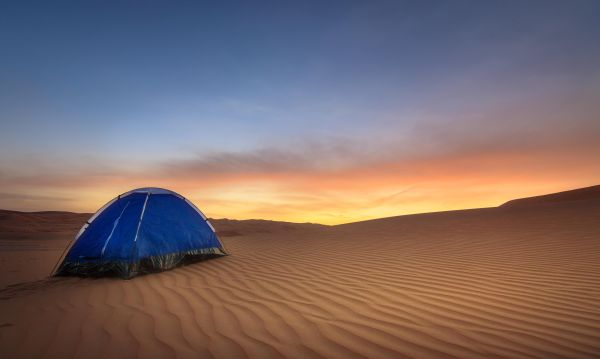
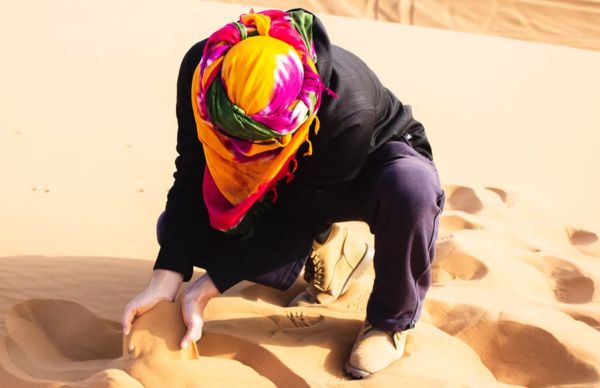
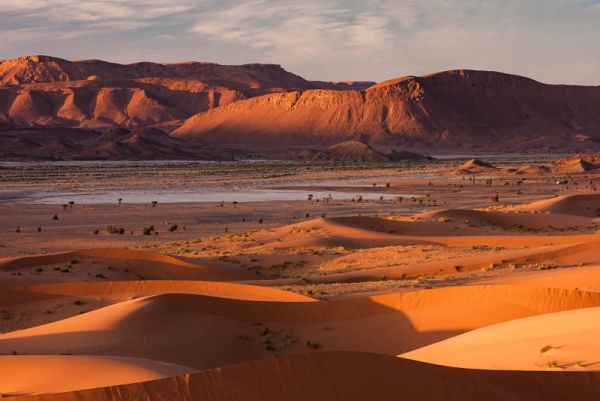
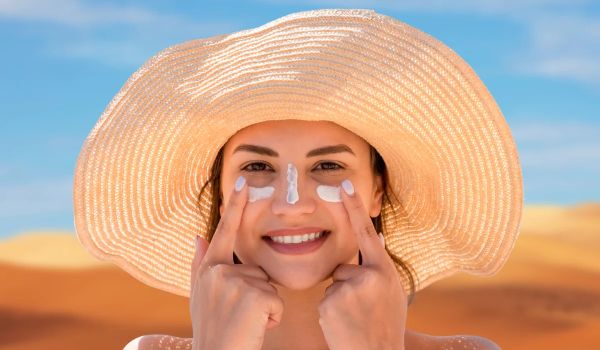
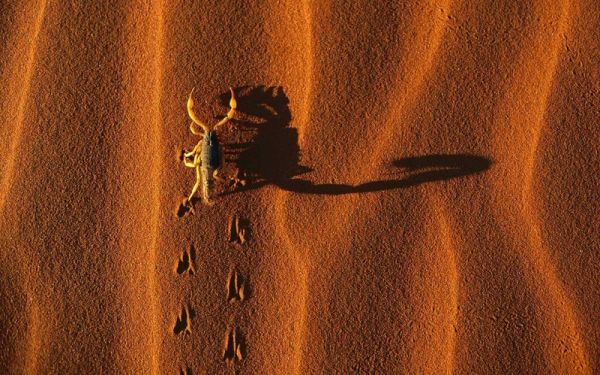
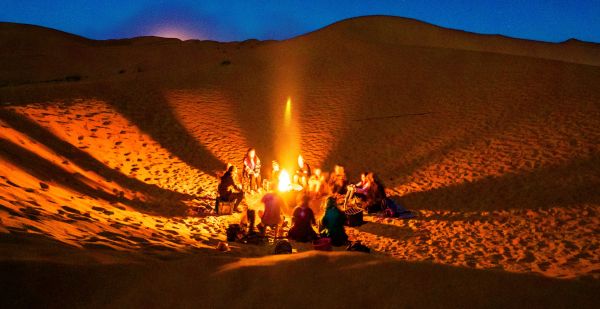
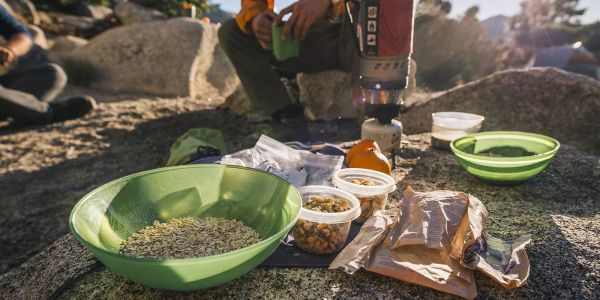
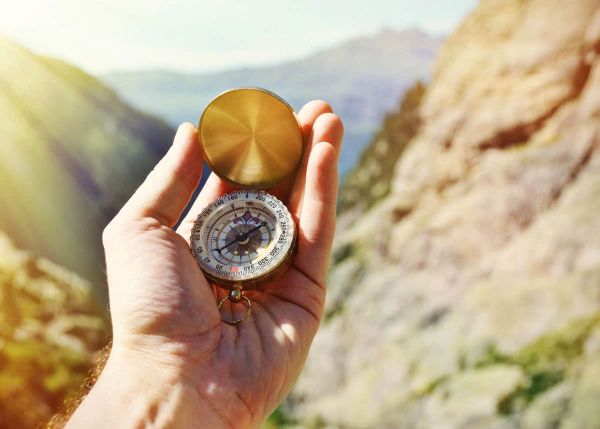
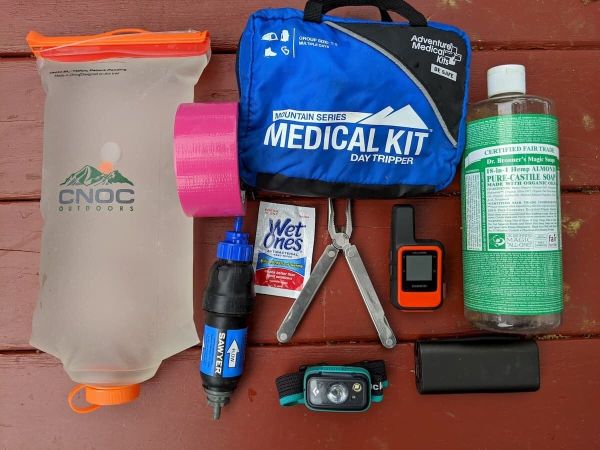
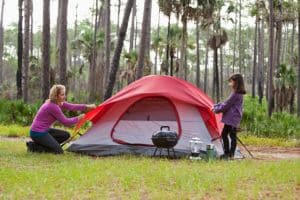
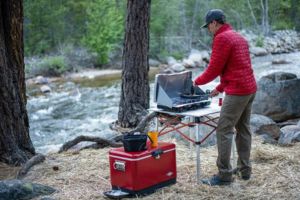
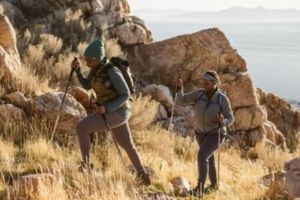
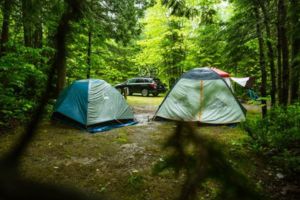
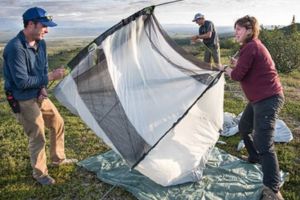
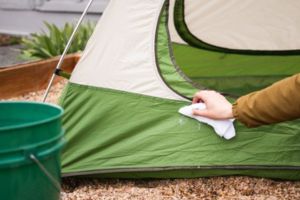
Leave A Comment